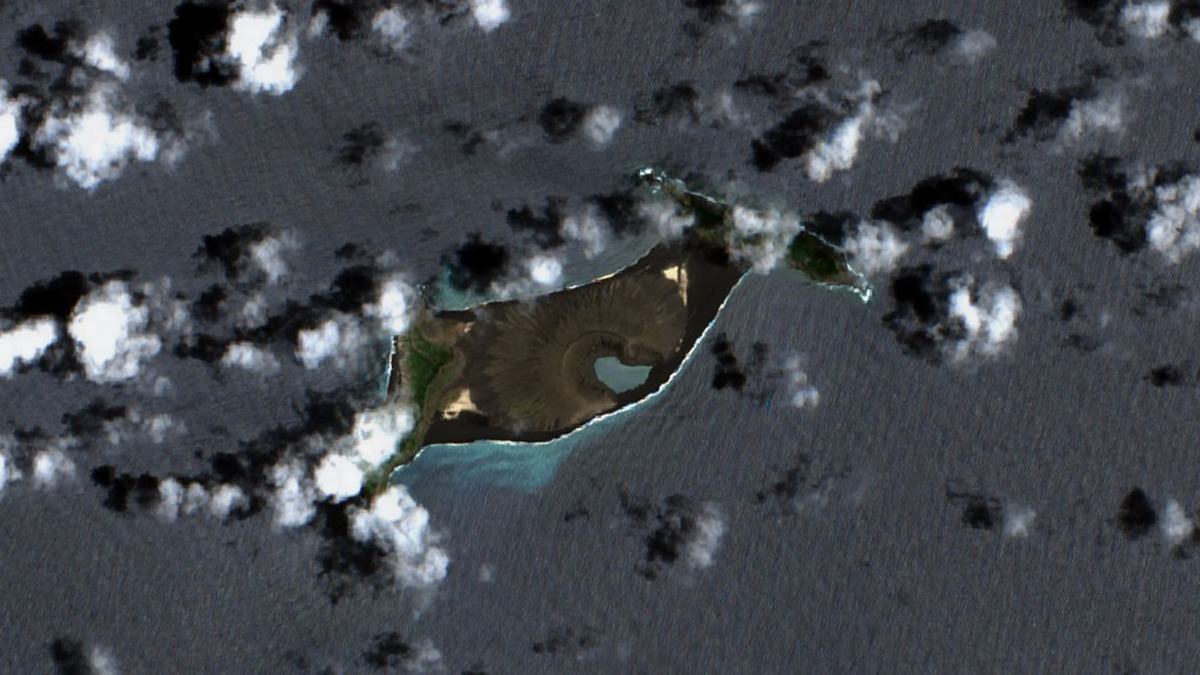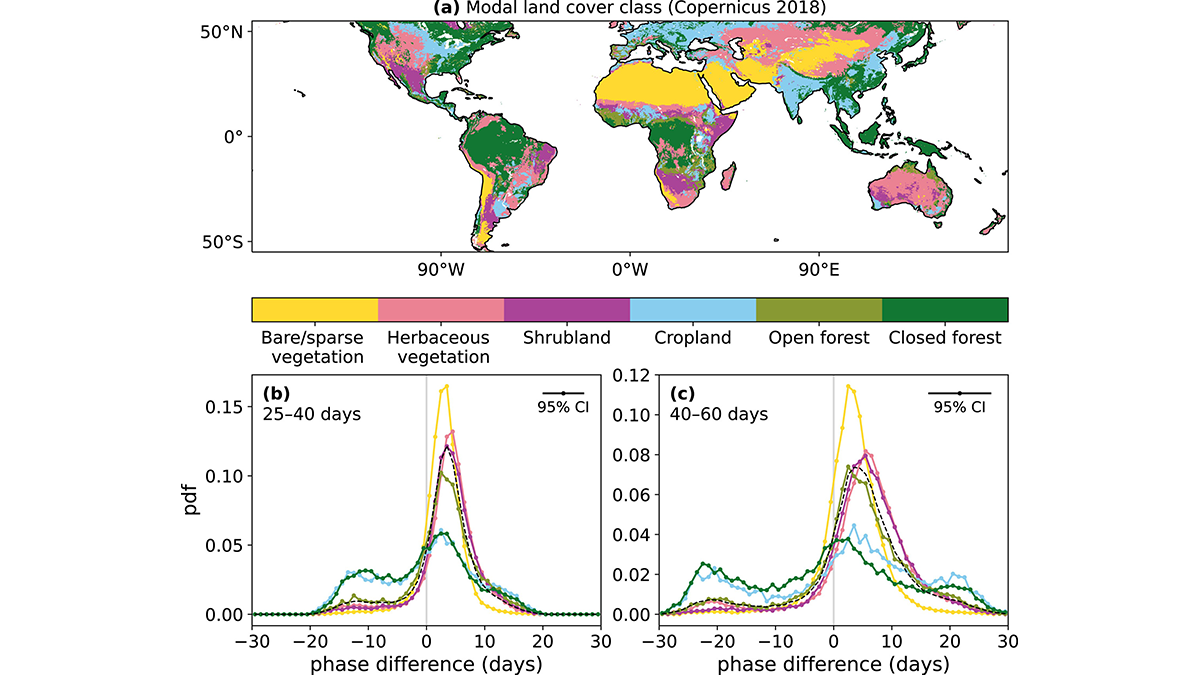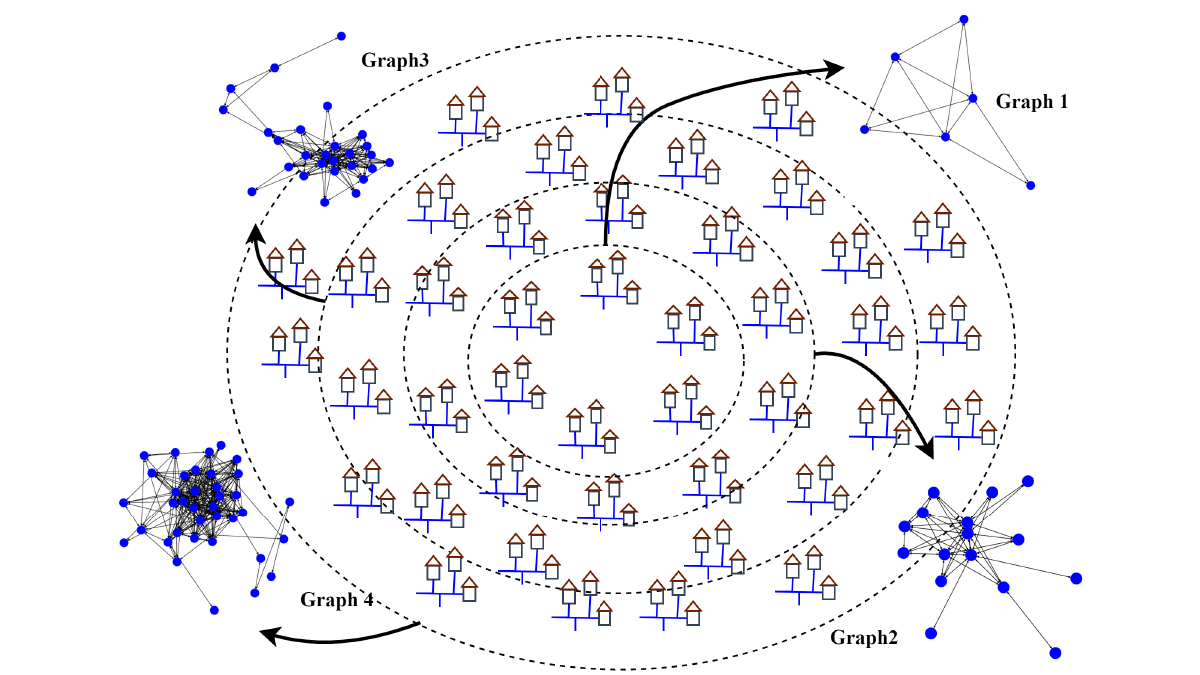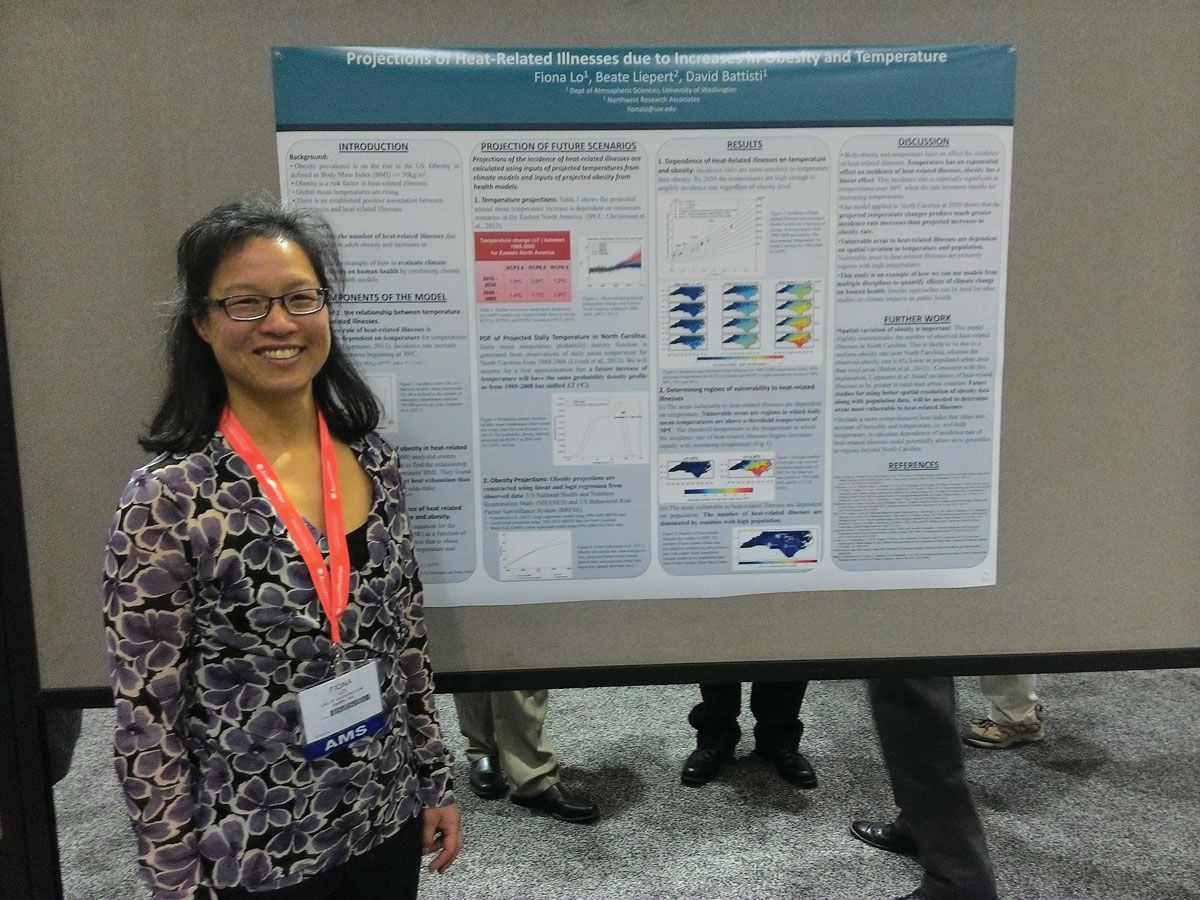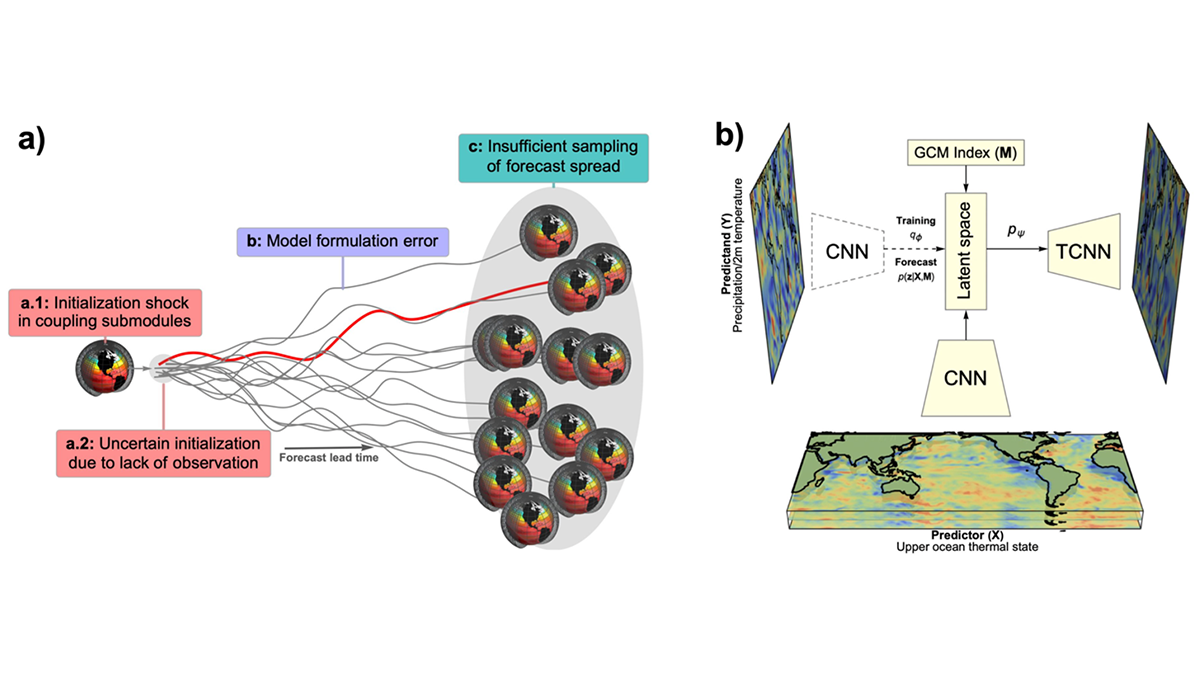New research outlines the risk of catastrophic eruptions and urges policymakers to support more widespread monitoring.
forecasting
Variability of ENSO Forecast Skill Over the 20th Century
El Niño Southern Oscillation (ENSO) predictability is examined in a new global coupled retrospective forecast ensemble for the 20th Century.
Quantifying Changes in Midlatitude Subseasonal Prediction Skill
The differences between future and present subseasonal predictability in the Northern Hemisphere provided by the tropics are evaluated using neural networks.
11 Discoveries Awaiting Us at Solar Max
Each solar cycle might seem like the same old story, but one thing has changed significantly since the previous solar maximum–our technology.
Advanced Real-Time Prediction of Storms With 30-Second Refresh
A new-generation weather radar and a massive supercomputing system enables forecasts of storms refreshed every 30 seconds, a significant development in severe weather prediction.
AI Algorithm Provides More Accurate Forecasts of Water Use
The new graph convolutional recurrent neural network (GCRNN) will enable water utilities to forecast water use, even if some sensors fail.
Landfalling Hurricanes Intensify Due to Coastal Downwelling
Hurricane winds can lead to coast downwelling, which brings warmer surface water near the coast and can contribute to the intensification of the landfalling hurricane.
Fiona Lo: A “Really Long, Convoluted Path” to Health
Lo uses her background in atmospheric sciences to forecast pollen concentrations.
Learning from Climate Simulations for Global Seasonal Forecast
A probabilistic deep learning methodology that learns from climate simulation big data offers advantageous seasonal forecasting skill and crucial climate model diagnosis information at a global scale.
Can We Better Predict Coastal Change?
A new special collection invites studies on a new era of models and knowledge that provide predictions or insights into predictability in coastal geomorphology.

